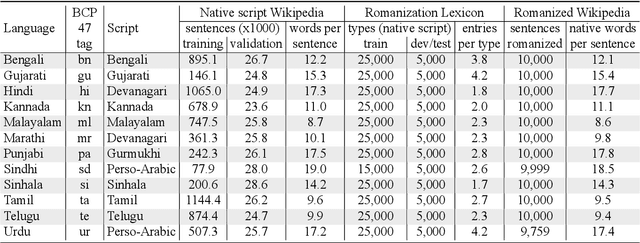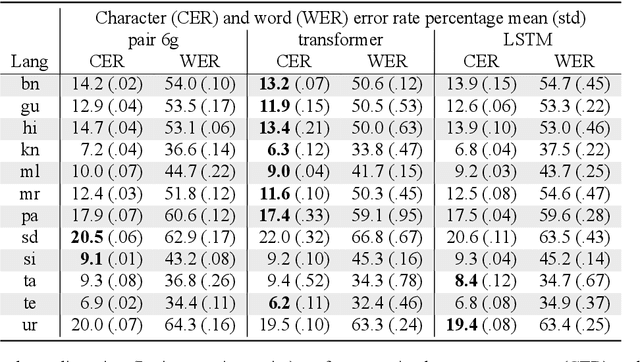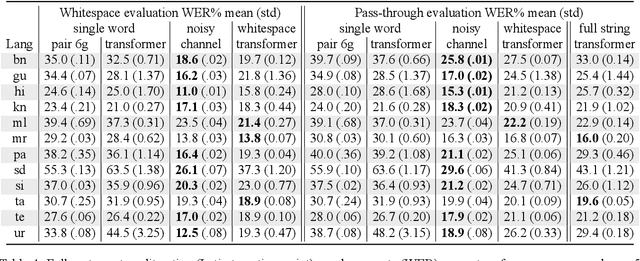Cibu Johny
Beyond Arabic: Software for Perso-Arabic Script Manipulation
Jan 26, 2023Abstract:This paper presents an open-source software library that provides a set of finite-state transducer (FST) components and corresponding utilities for manipulating the writing systems of languages that use the Perso-Arabic script. The operations include various levels of script normalization, including visual invariance-preserving operations that subsume and go beyond the standard Unicode normalization forms, as well as transformations that modify the visual appearance of characters in accordance with the regional orthographies for eleven contemporary languages from diverse language families. The library also provides simple FST-based romanization and transliteration. We additionally attempt to formalize the typology of Perso-Arabic characters by providing one-to-many mappings from Unicode code points to the languages that use them. While our work focuses on the Arabic script diaspora rather than Arabic itself, this approach could be adopted for any language that uses the Arabic script, thus providing a unified framework for treating a script family used by close to a billion people.
Google Crowdsourced Speech Corpora and Related Open-Source Resources for Low-Resource Languages and Dialects: An Overview
Oct 14, 2020Abstract:This paper presents an overview of a program designed to address the growing need for developing freely available speech resources for under-represented languages. At present we have released 38 datasets for building text-to-speech and automatic speech recognition applications for languages and dialects of South and Southeast Asia, Africa, Europe and South America. The paper describes the methodology used for developing such corpora and presents some of our findings that could benefit under-represented language communities.
Processing South Asian Languages Written in the Latin Script: the Dakshina Dataset
Jul 02, 2020



Abstract:This paper describes the Dakshina dataset, a new resource consisting of text in both the Latin and native scripts for 12 South Asian languages. The dataset includes, for each language: 1) native script Wikipedia text; 2) a romanization lexicon; and 3) full sentence parallel data in both a native script of the language and the basic Latin alphabet. We document the methods used for preparation and selection of the Wikipedia text in each language; collection of attested romanizations for sampled lexicons; and manual romanization of held-out sentences from the native script collections. We additionally provide baseline results on several tasks made possible by the dataset, including single word transliteration, full sentence transliteration, and language modeling of native script and romanized text. Keywords: romanization, transliteration, South Asian languages
 Add to Chrome
Add to Chrome Add to Firefox
Add to Firefox Add to Edge
Add to Edge